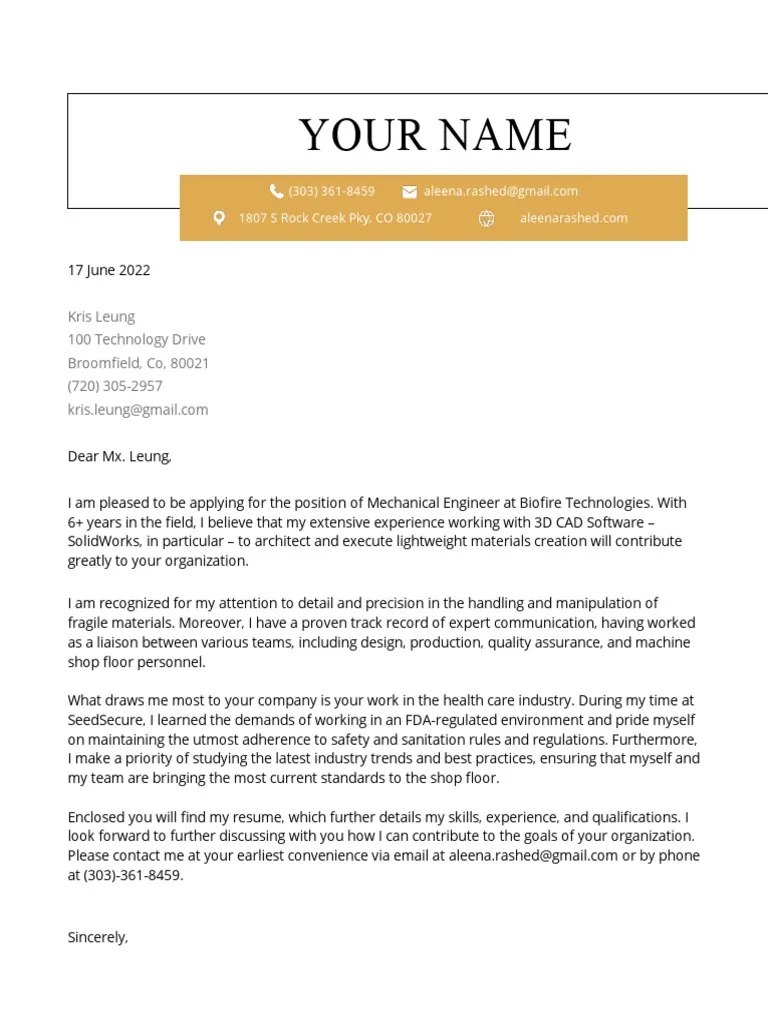Why a Strong Cover Letter Matters for Engineers
In the competitive field of engineering, a well-crafted cover letter is your first opportunity to make a strong impression and distinguish yourself from other applicants. It’s a crucial tool that provides context to your resume, allowing you to elaborate on your skills, experience, and passion for engineering. Unlike a resume, which offers a snapshot of your qualifications, a cover letter allows you to tell a compelling story about your career aspirations and how your skills align with the specific requirements of the job and the values of the company. A strong cover letter demonstrates your communication skills, attention to detail, and genuine interest in the position, all of which are highly valued by hiring managers in the engineering industry. This is not just an optional extra; it’s a vital component of a successful job application.
Highlighting Your Skills and Experience
Your cover letter should effectively showcase your skills and experience, tailored to the specific engineering job you are applying for. The key is to go beyond simply listing your qualifications and to demonstrate how your skills translate into tangible achievements and how they align with the employer’s needs. Begin by identifying the key skills and experiences that the job description emphasizes. Then, in your cover letter, provide specific examples of how you have used these skills in past projects or roles. Quantify your accomplishments whenever possible, using metrics and data to illustrate the impact of your work. This helps to give the hiring manager a clear understanding of your abilities and potential value to their team. The goal is to paint a vivid picture of your capabilities and to illustrate how you can contribute to the success of the company.
Technical Skills
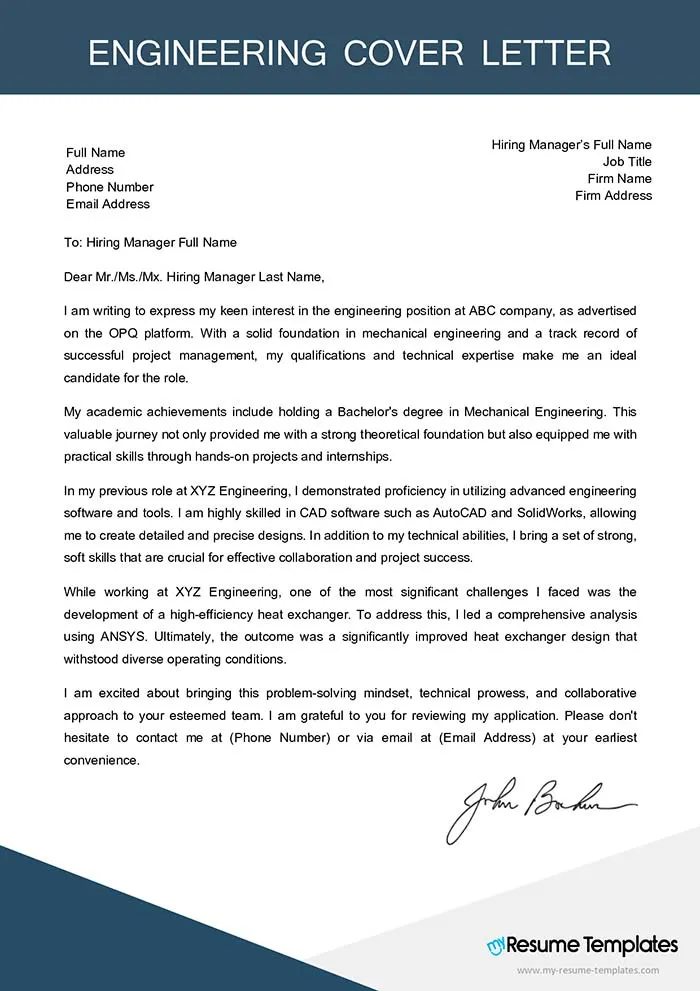
Technical skills form the backbone of any engineer’s capabilities. In your cover letter, be sure to highlight the specific technical skills that are most relevant to the job you are applying for. This might include proficiency in software like AutoCAD, SolidWorks, or MATLAB, depending on the engineering discipline. Mention your experience with specific technologies, tools, and methodologies that the employer requires. For instance, if the job involves structural analysis, mention your experience with finite element analysis (FEA) software. It’s important to not only list your technical skills but also to provide context. Briefly explain how you have used these skills in past projects and what results you achieved. This provides tangible evidence of your technical proficiency.
Problem-Solving Abilities
Engineers are, at their core, problem solvers. Your cover letter is a great place to demonstrate your problem-solving abilities. Describe a situation where you faced a challenging engineering problem. Explain how you approached the problem, the steps you took to find a solution, and the outcome of your efforts. Use the STAR method (Situation, Task, Action, Result) to structure your response, providing a clear and concise account of your problem-solving process. For example, you might describe a project where you had to troubleshoot a design flaw, identify its root cause, and implement a solution that improved performance. Highlight your analytical skills, your ability to think critically, and your capacity to overcome obstacles. This showcases your ability to tackle complex engineering challenges.
Project Management Experience
Many engineering roles require project management skills. If you have experience managing projects, be sure to highlight this in your cover letter. Describe your role in managing projects, including your responsibilities, the size and scope of the projects, and your specific contributions. Mention your experience with project management methodologies like Agile or Waterfall, if applicable. Detail how you managed timelines, budgets, and resources, and what results you achieved. For instance, you could describe a project where you successfully delivered a product ahead of schedule and under budget. Emphasize your leadership, communication, and organizational skills. Project management experience demonstrates your ability to take initiative, manage teams, and deliver results.
Tailoring Your Cover Letter for Engineering Jobs
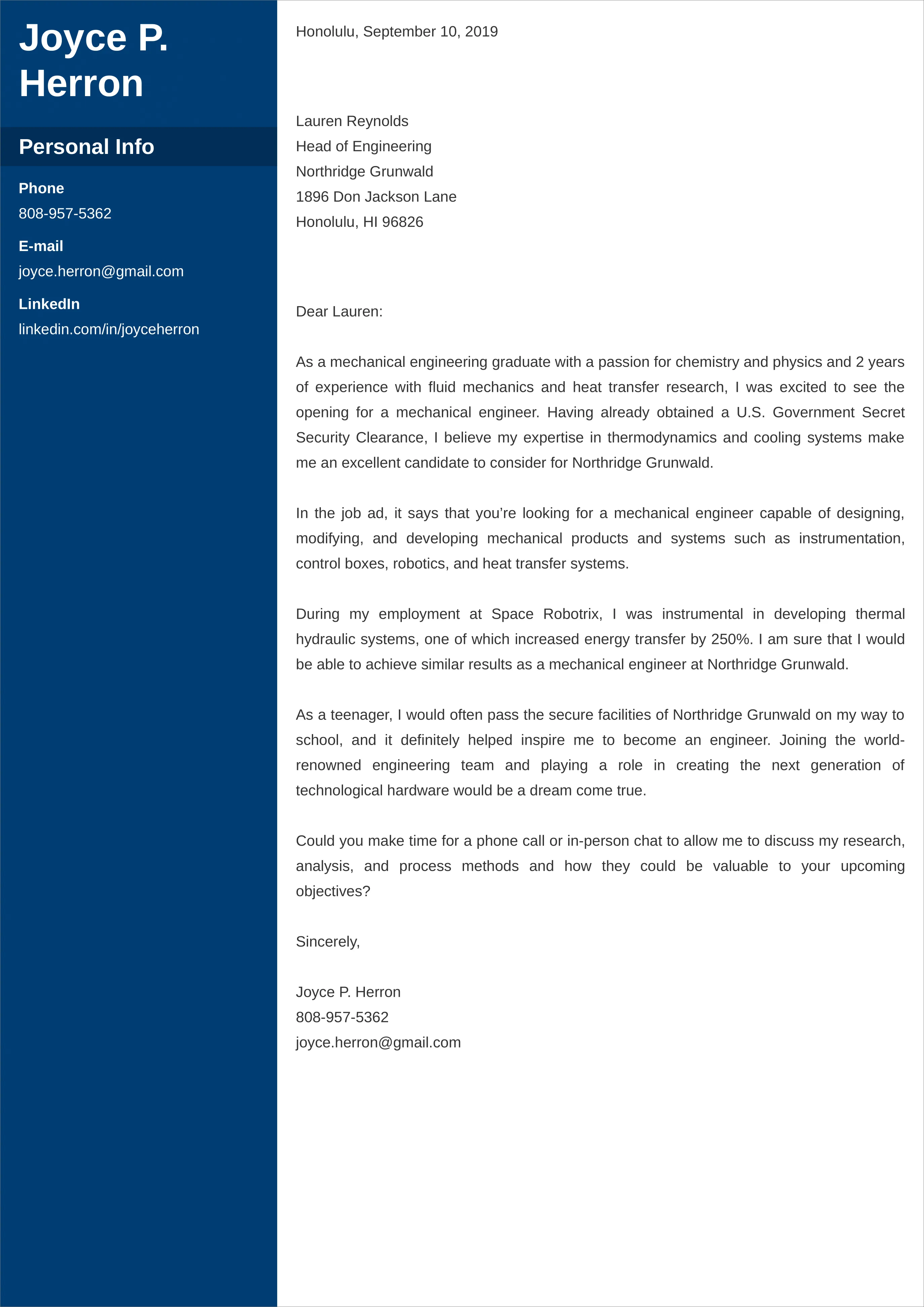
A generic cover letter won’t cut it in the competitive world of engineering. To make your application stand out, you must tailor each cover letter to the specific job and company you are applying for. Begin by carefully reviewing the job description and identifying the key requirements and qualifications that the employer is seeking. Customize your cover letter to address these requirements directly, highlighting your relevant skills and experience. Demonstrate that you understand the company’s mission, values, and goals, and explain how your contributions can align with them. This level of personalization shows that you’ve invested time and effort into your application, which significantly increases your chances of getting noticed. Remember, personalization is key to conveying your genuine interest and demonstrating that you’re the right fit for the job.
Researching the Company and the Role
Before you start writing your cover letter, research the company and the specific role you’re applying for. Visit the company’s website, read industry publications, and check out their social media presence. This research will help you understand the company’s culture, its current projects, and the specific challenges it faces. In your cover letter, mention specific projects or initiatives the company is working on, and explain how your skills and experience align with those efforts. Show that you understand the role’s responsibilities, and highlight how you can contribute to the company’s success. Demonstrating this level of knowledge and understanding will show the hiring manager that you are genuinely interested in the position and that you have done your homework.
Showcasing Relevant Achievements
Focus on showcasing your relevant achievements in your cover letter. Instead of just listing your job duties, emphasize the results you’ve achieved in past roles. Quantify your accomplishments whenever possible. Use numbers and data to illustrate the impact of your work. For instance, you might mention that you reduced production costs by a certain percentage or improved the efficiency of a process by a specific amount. Describe specific projects where you exceeded expectations, solved a difficult problem, or contributed to significant improvements. This approach demonstrates your ability to deliver results and adds a level of credibility to your claims. By showcasing your accomplishments, you make a strong case for why you should be considered for the job.
Formatting and Structure of an Engineering Cover Letter
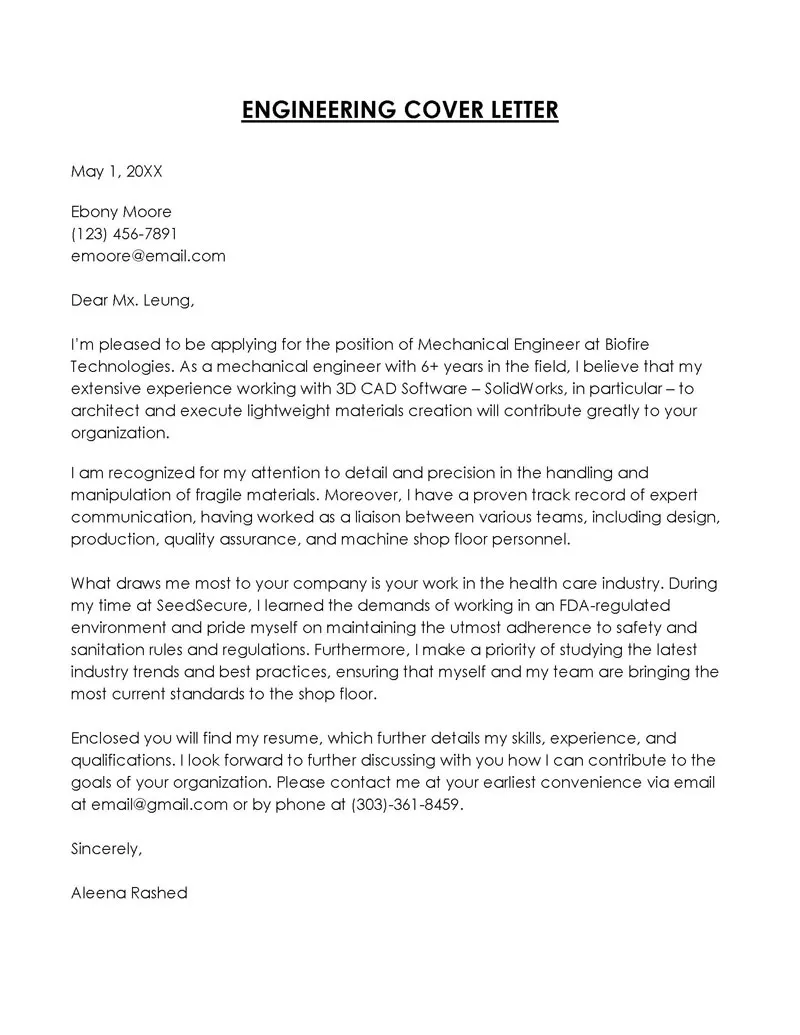
The format and structure of your cover letter are just as important as its content. A well-formatted letter is easy to read and makes a positive first impression. Use a professional font, such as Arial or Times New Roman, and maintain consistent formatting throughout the document. Keep the letter concise, ideally one page in length. Use clear and concise language, and avoid technical jargon unless it is essential for the role. The structure should include an introduction, body paragraphs that highlight your skills and experience, and a conclusion that expresses your interest in the position. Proofread the letter carefully to eliminate any grammatical errors or typos. A well-formatted and structured cover letter demonstrates your professionalism and attention to detail.
Contact Information and Salutation
Start your cover letter with your contact information, including your name, address, phone number, and email address. This information should be clearly displayed at the top of the letter. Use a professional email address; avoid anything that sounds unprofessional. Next, address the hiring manager directly if possible. Research the hiring manager’s name and title, and use a formal salutation such as “Dear Mr./Ms. [Last Name].” If you cannot find the hiring manager’s name, use a more general salutation like “Dear Hiring Manager.” Always use the correct title and spelling to demonstrate your attention to detail.
Opening Paragraph Hook
The opening paragraph is your chance to grab the reader’s attention and make a strong first impression. Start with a compelling hook that immediately captures the hiring manager’s interest. You could mention a specific project you worked on, a skill that is particularly relevant to the job, or your excitement about the company. Briefly state the position you are applying for and where you saw the job posting. Then, clearly state your primary reason for applying and your enthusiasm for the role. The opening paragraph should set the tone for the rest of the letter and convince the reader to continue reading.
Body Paragraphs
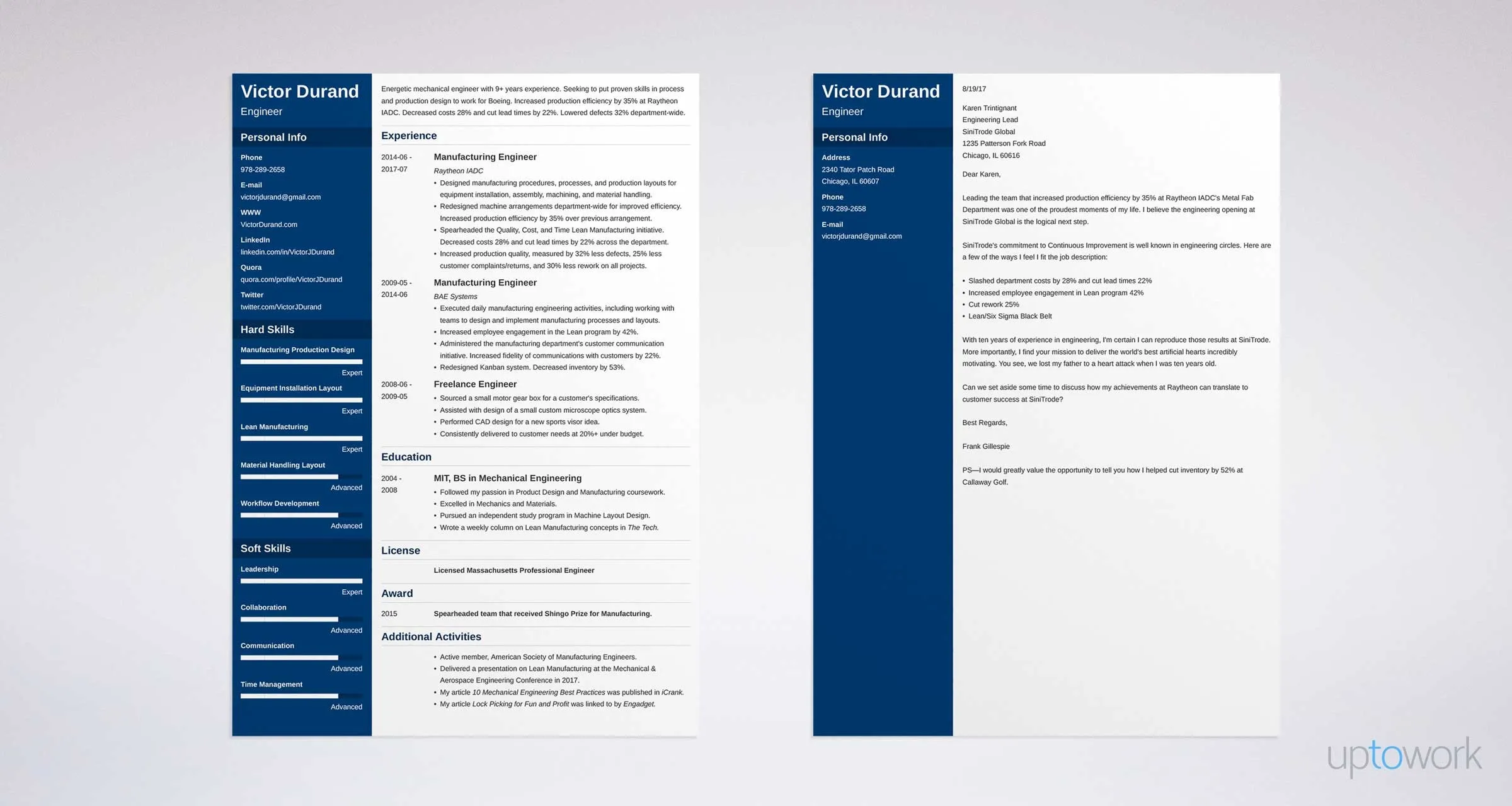
The body paragraphs are where you provide details about your skills, experience, and achievements. Focus on the key requirements of the job description, and provide specific examples to illustrate your abilities. Structure your paragraphs logically, using clear topic sentences and supporting details. For each skill or experience you discuss, provide context by explaining the situation, the actions you took, and the results you achieved. Quantify your achievements whenever possible. Use action verbs to describe your work and accomplishments. Keep the language concise and avoid unnecessary jargon. The body paragraphs are the meat of your cover letter. Use them to demonstrate your value and show why you are the ideal candidate for the role.
Closing the Cover Letter
Conclude your cover letter with a strong closing paragraph. Reiterate your interest in the position and summarize your key qualifications. Reiterate your enthusiasm for the company and the opportunity. Thank the hiring manager for their time and consideration. This is your last chance to make a positive impression, so ensure your closing is polite, professional, and memorable. Avoid generic phrases and instead, tailor your closing to the specific role and company. Show genuine interest and excitement about the opportunity to work with the company. A strong closing paragraph can leave a lasting impression and increase your chances of getting an interview.
Call to Action
End your cover letter with a clear call to action. State your availability for an interview and how you can be contacted. You can also express your eagerness to discuss your qualifications further and provide additional information. Clearly indicate your willingness to follow up if needed. This demonstrates your initiative and your interest in moving forward with the application process. Provide your contact information again, making it easy for the hiring manager to reach you. A strong call to action makes it easy for the employer to take the next step and consider you for the position.
Cover Letter Sample for Engineering Jobs [Free Download]
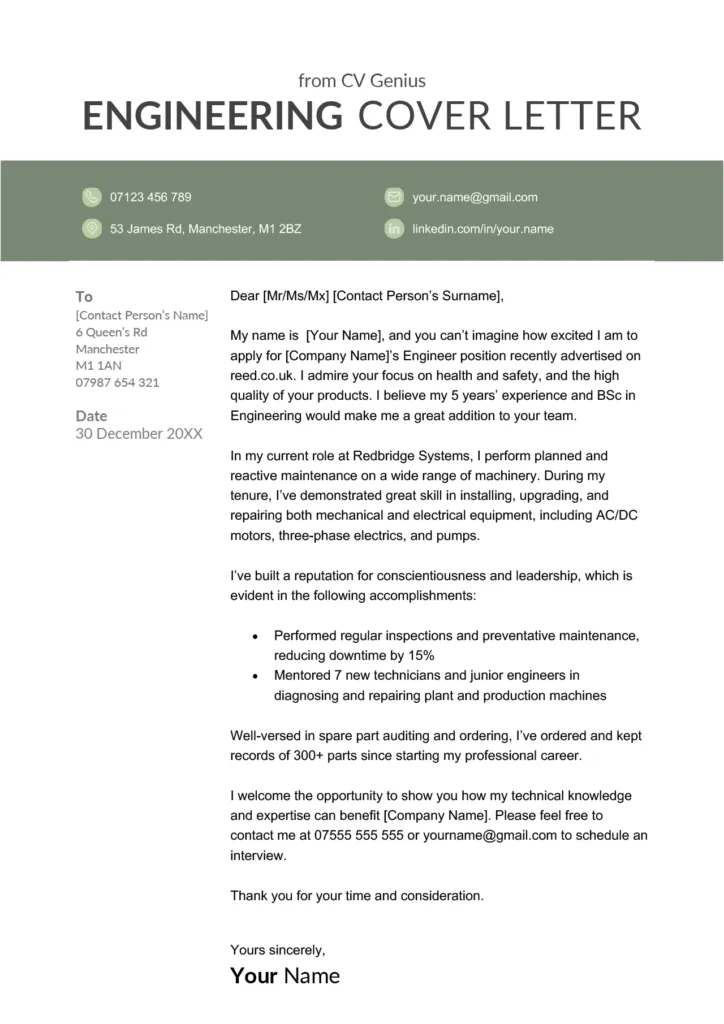
A well-crafted cover letter sample provides a solid foundation for creating your own application. It serves as a useful template, showing you how to structure your letter, what content to include, and how to format it professionally. You can find many free cover letter samples online specifically tailored to engineering jobs. Look for samples that align with the type of engineering position you are applying for (e.g., mechanical, civil, electrical). Review the samples, paying close attention to how the candidates highlight their skills, experience, and achievements. Adapt the sample to reflect your own unique qualifications, ensuring that you customize it to the specific job requirements. Always personalize the sample to ensure it reflects your authentic voice and showcases your value to the employer. Remember, these are examples to guide you, not to be copied verbatim.
Downloadable Template and Examples
Downloadable templates and examples can save you time and help you create a polished cover letter quickly. Several websites offer free cover letter templates in various formats, such as Word documents or Google Docs. Choose a template that matches the tone and style of your desired profession. When using a template, make sure to customize it thoroughly with your own information. Replace the placeholder text with your details, adjust the formatting as needed, and add your skills and experience. Use the template as a framework, but always personalize it. Remember, the goal is to present a unique and compelling narrative. A customized template is a great way to start, but the key is to tailor it to reflect your individuality.
Template 1 Example
This template focuses on highlighting your technical skills and project experience. The sections will typically include contact information, a brief introduction, a section on technical skills, a section on project experience with details, and a closing paragraph. You can replace the placeholders with your own information and customize the content to fit your specific qualifications and the requirements of the engineering role. Key elements to modify will be project descriptions, software proficiency, and the results achieved in your projects. This example is useful for roles that value strong technical expertise and practical experience.
Template 2 Example
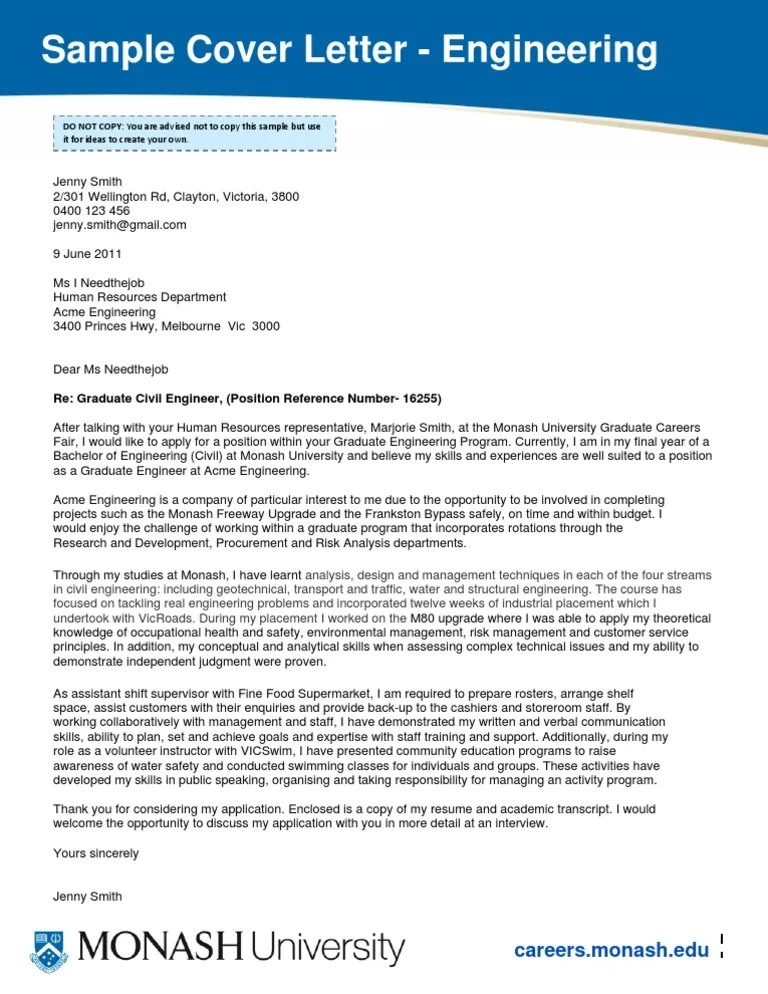
Template 2 emphasizes your soft skills and problem-solving abilities, alongside your technical background. Sections will include contact details, a concise opening statement, a section showcasing your problem-solving skills with real-world examples, and a section focused on teamwork and communication abilities. This template should be adapted to highlight projects where you demonstrated leadership, critical thinking, and collaboration. It is designed for positions where soft skills are highly valued, like project management or roles requiring significant cross-functional interaction. Modify the template to show instances where you managed conflicts, improved project processes, or enhanced team effectiveness.
Template 3 Example
Template 3 is designed to emphasize your educational background and research experience. Contact details, a brief opening statement, a summary of your relevant educational qualifications, and details of your research projects will be highlighted. It is suitable for recent graduates or those seeking research-oriented roles. The template should focus on your academic achievements, publications, and the significance of your research. When using this, emphasize the impact and relevance of your research findings to the requirements of the job. Customize the template to provide evidence of your research skills, publications, and any awards or honors you have received. It is suitable for academic and research roles.
Common Mistakes to Avoid in Engineering Cover Letters
Avoiding common mistakes is essential for creating a strong cover letter. These mistakes can detract from your application and prevent you from making a positive impression on the hiring manager. By being aware of these pitfalls, you can ensure your cover letter effectively showcases your skills, experience, and enthusiasm for the job. Proofreading your letter carefully and seeking feedback from others can help identify and eliminate errors. Pay careful attention to detail and ensure your cover letter represents you professionally.
Generic Cover Letters
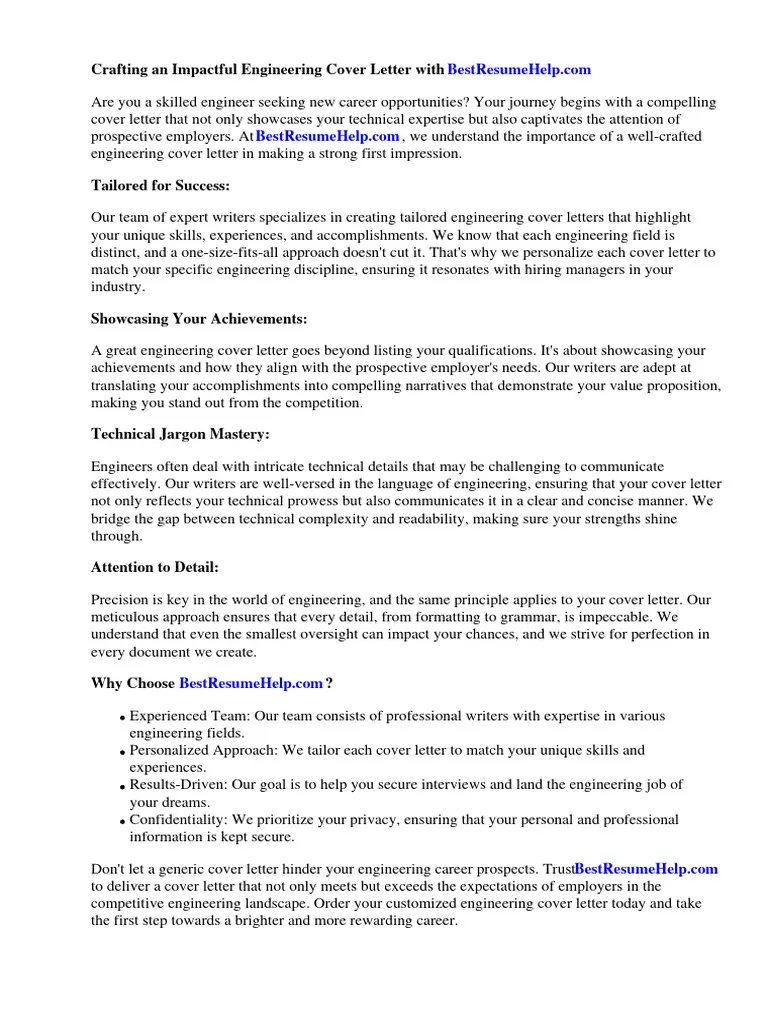
Submitting a generic cover letter is one of the biggest mistakes you can make. A generic cover letter lacks personalization and fails to demonstrate that you’ve taken the time to understand the specific job and company. Hiring managers can easily spot generic letters. Such letters indicate a lack of genuine interest and can lead to your application being overlooked. Always tailor your cover letter to each job you apply for, addressing the specific requirements and highlighting your relevant skills and experience. Research the company, and show how your qualifications align with their mission and values. The effort in customizing your cover letter demonstrates your commitment and increases your chances of getting noticed. Generic applications show that you are not invested in the role.
Typos and Grammatical Errors
Typos and grammatical errors can damage your credibility and make a negative impression on the hiring manager. These errors can indicate a lack of attention to detail and a lack of professionalism. Always proofread your cover letter carefully before submitting it. Check for spelling, grammar, punctuation, and sentence structure errors. Use a spell checker and grammar checker tool, but don’t rely on them entirely. Read the letter aloud to catch any errors that you may have missed. It is a good idea to have a friend or colleague review your cover letter as well to provide a fresh pair of eyes. A polished and error-free cover letter demonstrates your attention to detail and professionalism.
Lack of Enthusiasm
A cover letter that lacks enthusiasm can fall flat and fail to capture the hiring manager’s attention. Your cover letter is your opportunity to express your genuine interest in the job and the company. Show your passion for engineering and your excitement about the opportunity to contribute to their team. Use strong action verbs, and describe your skills and experience in a compelling way. Demonstrate that you have researched the company and understand their mission, values, and goals. This is your chance to make a strong first impression, so be enthusiastic and passionate about the role. Enthusiasm is contagious, and it can make you stand out from other applicants.
Final Thoughts and Next Steps
Creating a strong cover letter is a critical step in your job application process. By following the guidelines and tips outlined in this guide, you can create a compelling cover letter that will help you stand out from other applicants and increase your chances of getting hired. Remember to highlight your skills and experience, tailor your letter to each job, and proofread it carefully. Download the sample cover letter and use it as a template to craft your own, unique application. Once you have perfected your cover letter, tailor your resume. Take the time to do it right, and you will reap the rewards. Good luck with your job search!
